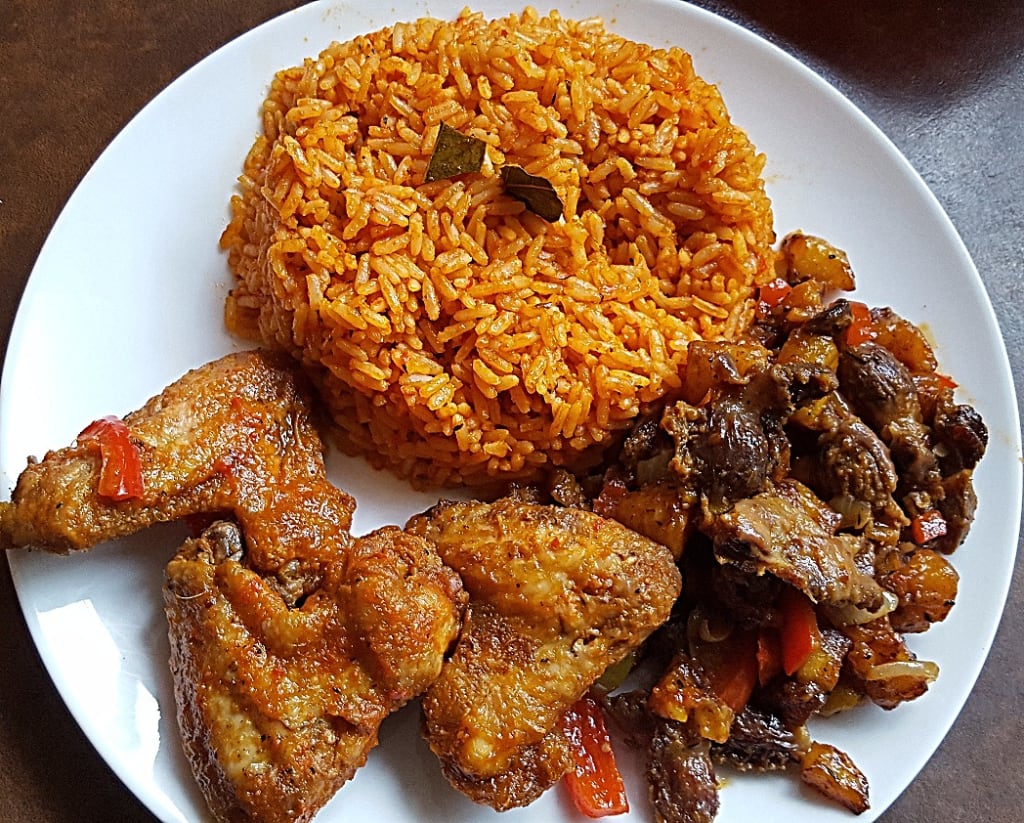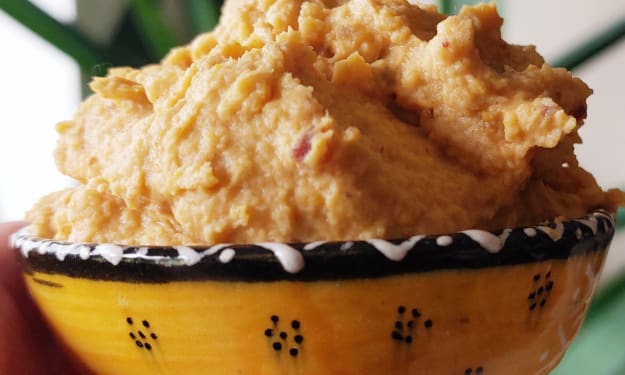
Traditionally, the various cuisines of Africa use a combination of locally available fruits such as, cereal grains and vegetables, as well as milk and meat products,and do not usually have food imported. In some parts of the continent, the traditional diet features an abundance of milk, curd and whey products. A typical West African meal is made with starchy items and can contain meat, fish as well as various spices and herbs. A wide array of staples are eaten across the region, including fufu, banku, kenkey (originating from Ghana), foutou, couscous, tô, and garri, which are served alongside soups and stews. Fufu is often made from starchy root vegetables such as yams, cocoyams, or cassava, but also from cereal grains like millet, sorghum or plantains.
The staple grain or starch varies between regions and ethnic groups, although corn has gained significant ground as it is cheap, swells to greater volumes and creates a beautiful white final product that is greatly desired. Banku and kenkey are maize dough staples, and gari is made from dried grated cassavas. Rice dishes are also widely eaten in the region, especially in the dry Sahel belt inland. Examples of these include benachin from The Gambia and Jollof rice, a pan-West African rice dish similar to Arab kabsah. Seeds of Guinea pepper (Aframomum melegueta; also called grains of paradise or melagueta pepper), a native West African plant, were used as a spice and even reached Europe, through North African middlemen, during the Middle Ages. Centuries before the influence of Europeans, West Africans were trading with the Arab world and spices like cinnamon, cloves, and mint were not unknown and became part of the local flavorings. Centuries later, the Portuguese, French and British influenced the regional cuisines, but only to a limited extent. The local cuisine and recipes of West Africa continue to remain deeply entrenched in the local customs and traditions, with ingredients like native rice (Oryza glaberrima), rice, fonio, millet, sorghum, Bambara groundnuts and Hausa groundnuts, black-eyed peas, brown beans, and root vegetables such as yams, cocoyams, sweet potatoes, and cassava. Cooking techniques include roasting, baking, boiling, frying, mashing, and spicing. A range of sweets and savories are also prepared. Cooking techniques of West Africa are changing. In the past West Africans ate much less meat and used native oils (palm oil on the coast and shea butter in Sahelian regions). Baobob leaf and numerous local greens were everyday staples during certain times of the year. Today the diet is much heavier in meats, salt, and fats. Many dishes combine fish and meat, including dried and fermented fish. Flaked and dried fish is often fried in oil, and sometimes cooked in sauce made up with hot peppers, onions, tomatoes, and various spices (such as soumbala) and water to prepare a highly flavored stew.
In some areas beef and mutton are preferred, and goat meat is the dominant red meat. Suya, a popular grilled spicy meat kebab flavored with peanuts and other spices, is sold by street vendors as a snack or evening meal and is typically made with beef or chicken. It is common to have a preponderance of seafood and the seafood, as earlier stated, is sometimes also mixed with other meat products. Guinea fowl eggs, eggs and chicken are also preferred.
With regard to beverages, water has a very strong ritual significance in many West African nations (particularly in dry areas) and water is often the first thing an African host will offer his/her guest. Palm wine is also a common beverage made from the fermented sap of various types of palm trees and is usually sold in sweet (less-fermented, retaining more of the sap's sugar) or sour (fermented longer, making it stronger and less sweet) varieties. Millet beer is another common beverage.





Comments
There are no comments for this story
Be the first to respond and start the conversation.